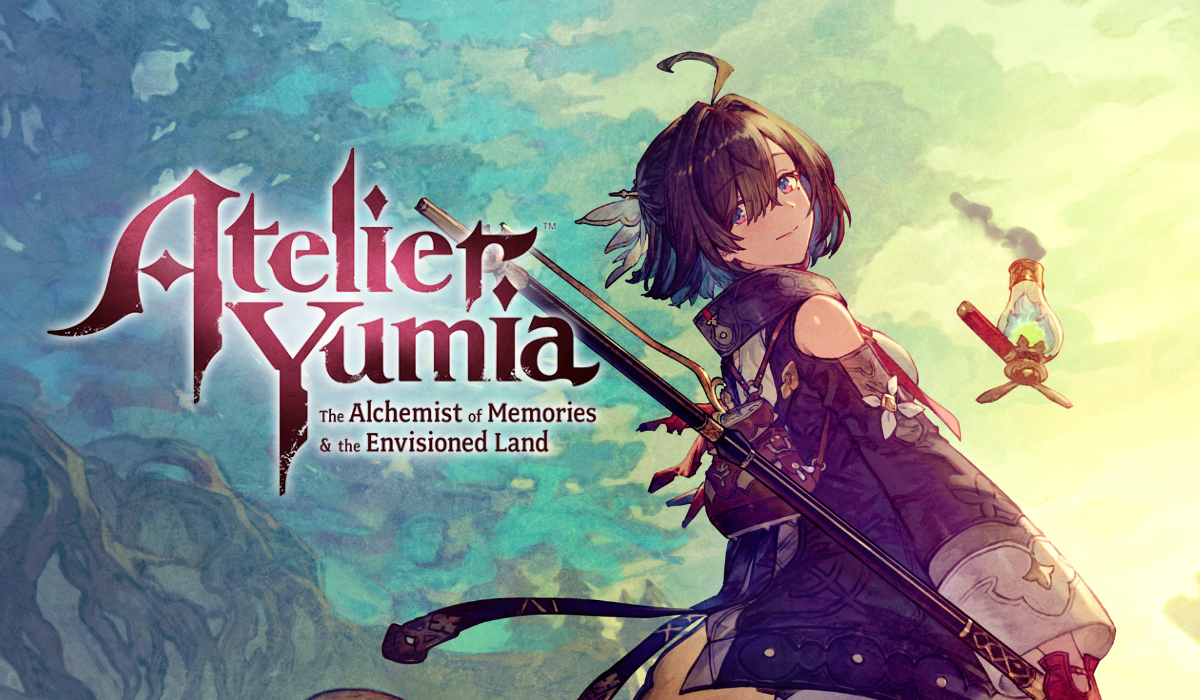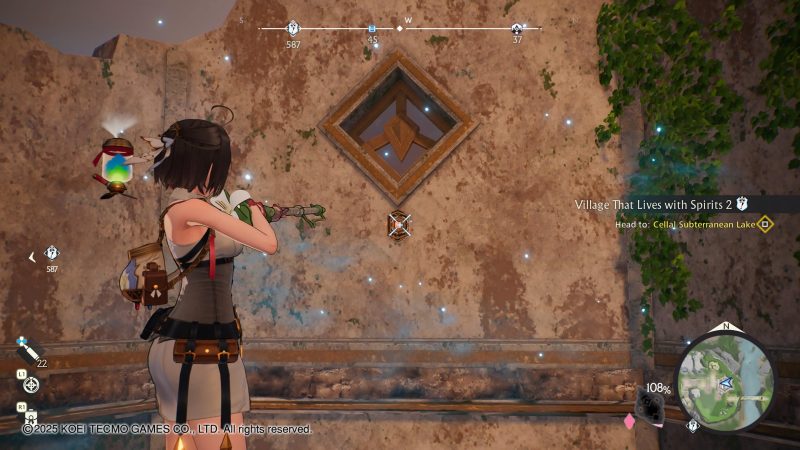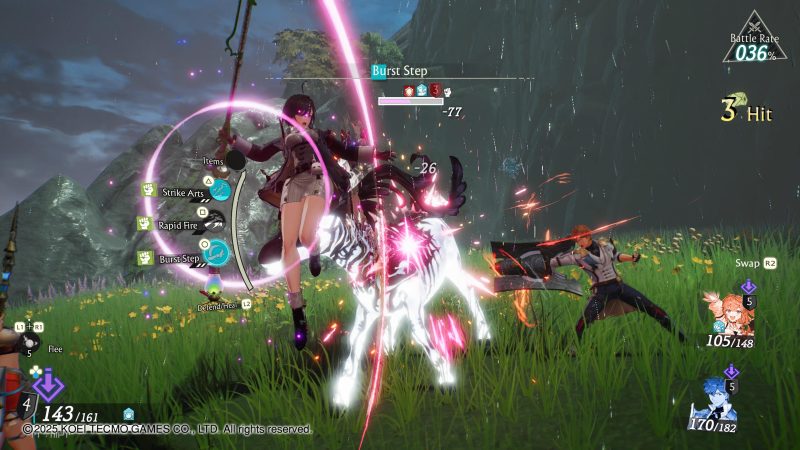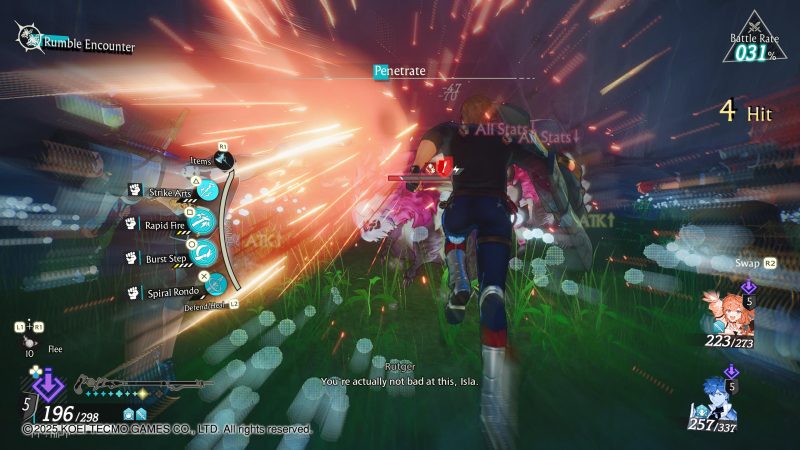Atelier Yumia: The Alchemist of Memories & the Envisioned Land PS5 Review. The character of Ryza became a fan favorite almost immediately, and even expanded the player base for the Atelier games. This goes to show just how effective a good concept and leading character can be.
This time around, Atelier Yumia: The Alchemist of Memories & the Envisioned Land introduces a brand new protagonist and some rather big changes to the franchise. Thankfully, most of these changes improve the Atelier formula. Also, if I may say so, Yumia gives Ryza a run for her money.
Atelier Yumia: The Alchemist of Memories & the Envisioned Land Review (PS5) – Raising the Bar for the Atelier Series
Proving Self
Yumia Liessfeldt, an alchemist, lives in a world where alchemy is essentially outlawed. This stems from an alchemic disaster that the population blames entirely on alchemy and alchemists. Naturally, Yumia does not receive much welcome or kindness in her life.
However, that same alchemic disaster created several lingering problems in the world in the form of manabound areas. These concentrations of mana quickly drain people to the point of exhaustion, which essentially keeps normal people from safely approaching those areas. Reluctantly, the military hires Yumia to assist in clearing out these manabound areas and cleanup after the alchemic disaster. Naturally, the military sends two people with Yumia to watch her every move and make sure she doesn’t do anything other than actions needed to complete the mission.
For Yumia, not only is this a way for her to try and validate alchemy to the public, she also gains insights into the past. All mana holds memories of people and situations, and alchemists can channel that mana to gain that information. This information can come in the form of recipes or skill points (for literal character leveling), and it also provides her with tidbits from the past.
Gathering In An Open World
Soon after the game gets started, tidbits of information about the manabound areas, particularly who actually caused them. As the story progresses, this topic grows more and more personal for Yumia, and more details about her mother slowly surface. We mentioned in our hands-on preview of Atelier Yumia that Gust studio head, Junzo Hosoi, took a lot of personal inspiration for Yumia and her backstory. So, Yumia’s journey into the future is filled with somber memories and past events that start to tug on your heartstrings.
When compared to the rest of the franchise, Atelier Yumia sees plenty of boosts in production value across the board. For instance, this is the first Atelier game that features an entirely open world. The map itself is massive. However, the story paces you so that the map opens up in increments. That way, you never feel overloaded by the map itself. You can try to get to different regions, but the paths to reach new regions require a story beat to open said paths. Gust does a fantastic job of opening up the map without overburdening you with things to do.
Considering the way these games play, an open world works so well in an Atelier game. Before this, you run around a series of linear maps, collecting resources to craft more items and equipment. Here, you still do all of that, but you are not limited by fixed pathways or loading screens between areas. If it’s on the map, you can find a way to get there, even the weird peaks on random mountains; there may not be anything there for you to collect, but you can still get there.
Some resources sit on cliffsides, but you use your staff to shoot said resources in order to collect them. Not all resources can be collected this way. However, if you cannot reach the resource, then you can shoot it. To make things even more interesting, different collectibles are scattered throughout the map, many of which sit out of your reach. Just like with resources, you can shoot those collectibles to activate them and collect the reward.
These rewards provide points and items necessary to level up your skills and learn new alchemy recipes. The more you explore, the more of the map you unlock and the more capable you become, like increasing gained experience or resources collected from each node. All of these systems depend on each other, which caters to the need-and want-to explore the map. The game also facilitates progression by placing question marks on points of interest that you have not discovered yet. This way, you cannot miss anything.
It’s Action’s Turn Now
Among all of the improvements, none of them compares to the boost in combat presentation. Much like Atelier Ryza 3, you and your party chain abilities on the fly. However, the only sense of turn-based gameplay still in combat is waiting for skill points to recharge. Apart from that, Atelier Yumia showcases an action-oriented combat system.
Your opponent sits at the center of each fight, and you freely move or dodge around said opponent as needed. Then, the battlefield has two distances, one for close quarters and one for long range. You can freely jump between these two ranges, and your list of skills changes based on which ones are short or long range.
Just like all other Atelier games before it, Yumia brings with her two other party members to fight with her. So, during combat, all three of your characters fight at the exact same time. You can switch between players if you wish, but the other two manage themselves well enough. This allows you to focus your efforts on the enemy. Juggling your characters for different tactics helps you in certain boss situations, but you could still just play as Yumia and be just fine.
More Entertainment Than Challenge
In fact, even on Normal difficulty, your allies tend to take out regular enemies without you needing to do much. Unlike other Atelier games before this, Yumia’s entry doesn’t carry the same level of resistance when playing on Normal difficulty. Naturally, bosses require more attention, but that’s to be expected. Either way, it’s just not as hard. This may leave much of the combat experience too easy for some. Higher difficulties still exist here, so those looking for the challenge can still find one.
As a final note on combat, boss fights are just plain fun. They make you use everything you’ve learned and use them quickly. Fights are clearly choreographed, with enemy attacks showing an area of effect before the attack appears. These flights ask more of you, naturally, but they just feel fun instead of cumbersome. This probably has something to do with how much easier this game is when compared to previous entries, but who cares when the experience is fun?
The subtle movements that characters make look so much more sophisticated in Yumia than any previous franchise entry before it. For instance, when someone looks up at something, their shoulders move back and, depending on how far up they look, they even adjust their footing, making their entire person shift. It’s kind of hard to explain, but RPG fans will know what I mean. No one just spins to leave, as another example. Normally rigid motions and movements shift and take shape rather than just twist or rise or turn on a pivot point. Naturally, the visual fidelity doesn’t reach anywhere near the heights of games like The Last of Us, but the sophistication of movement in Yumia still far exceeds previous outings.
Still Some Work To Do
Atelier Yumia does a couple of things that previous entries do. In this case, these issues are nowhere near as bad as in other entries, but they still exist. The big one is difficulty spikes in new areas. In this case, the world map is separated into different regions, and different regions have different enemy levels. Logistically, this makes sense. However, I left the first region at level 40, and I destroyed all of the first region enemies with minimal effort. Then, I went into the next region and enemies took about five times as long to defeat. With that said, the difficulty spike is nowhere near the point of outright halting your progress. It just stands as a bit of a shock to the system.
The other issue, however slight, requires specific items be crafted for story quests. With each new entry, these situations get better, and the same goes for Yumia. While story quests still ask you to craft specific items, you generally have the recipes for those items available to you through the story. It’s just a matter of obtaining all of the materials necessary to craft it. With that in mind, the open world nature of the game helps to alleviate this object that previously delayed progress in older titles. As you run around, you can pick up everything while on the go. Apart from a few ore nodes, you can just run by materials and press Triangle to collect them without ever stopping.
A Fantastic Sign of Things To Come
It has to be such a cool feeling now for fans who have stuck with the Atelier franchise. After years of small-time games, the franchise finally reached more people than its dedicated niche following. Atelier Yumia: The Alchemist of Memories & the Envisioned Land capitalizes on successes from the Ryza trilogy and blazes its own trail with changes of its own.
Overall production value went way up, injecting even more life into the franchise. Then, the tried-and-true gameplay loop now applies to an open world setting. The game still shows some of its old colors, but the effects of those old colors just don’t have as big of a negative impact as they did in previous entries. Plus, the world itself just begs for you to explore it, making the entire experience even more enjoyable. This development team learned so much from previous titles, and it shows in Yumia.
Review code kindly provided by publisher.






